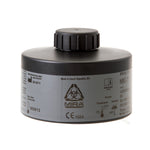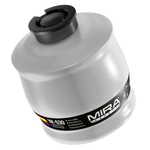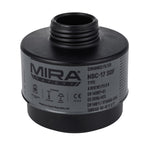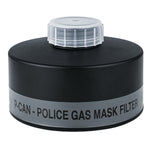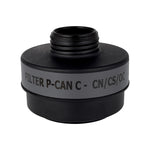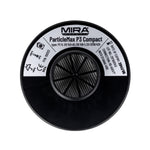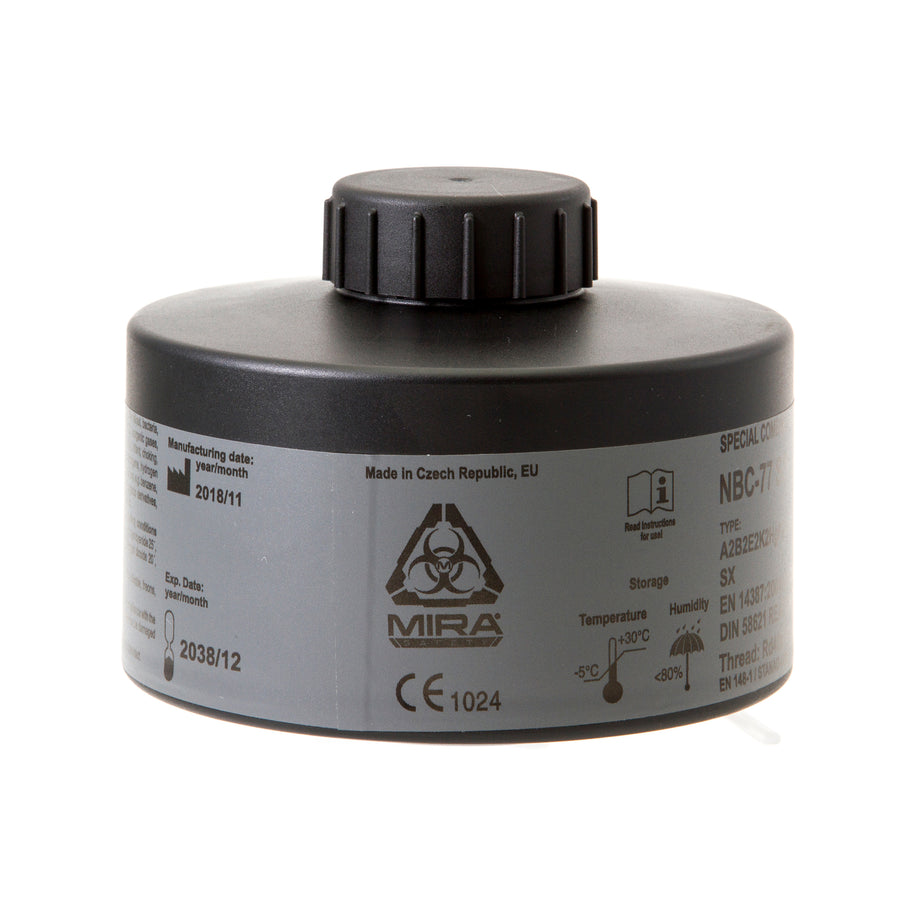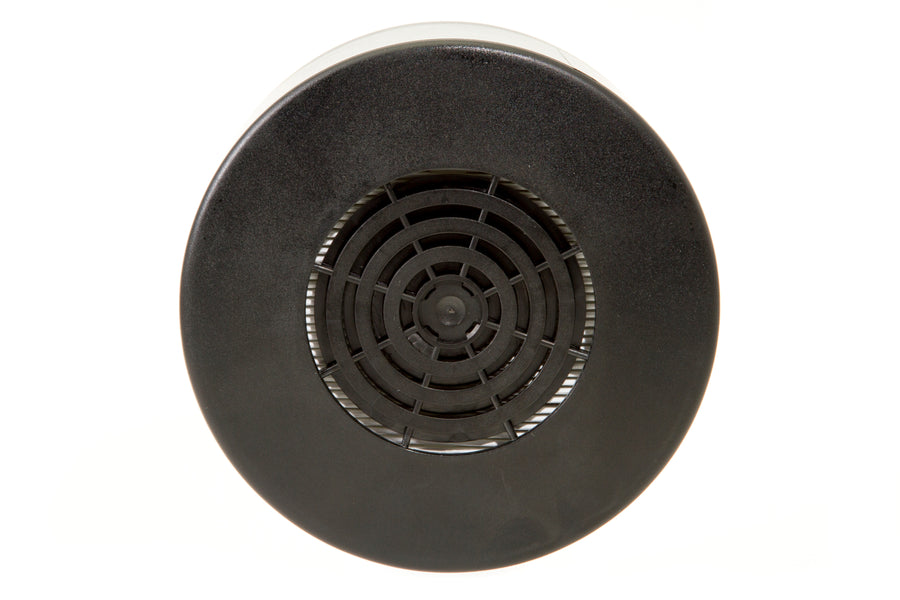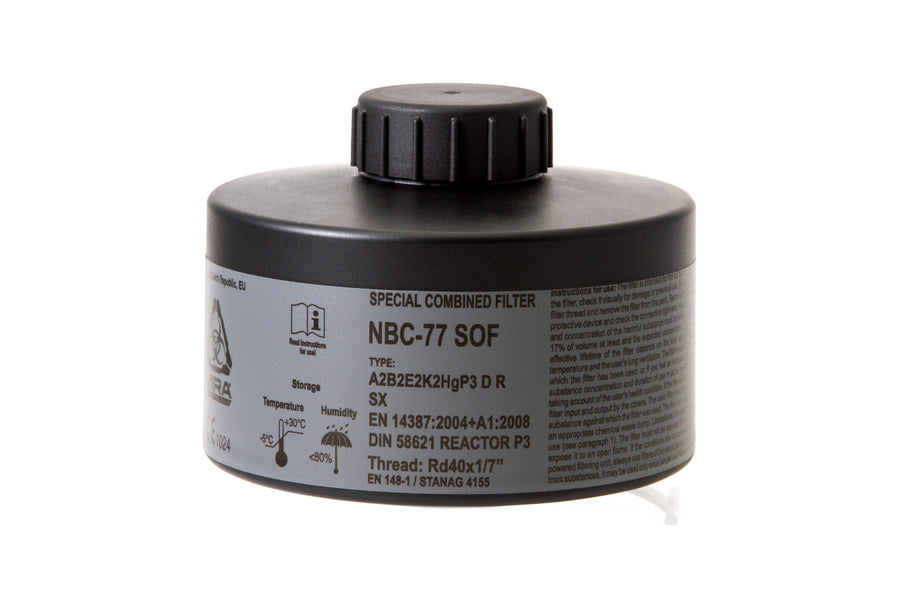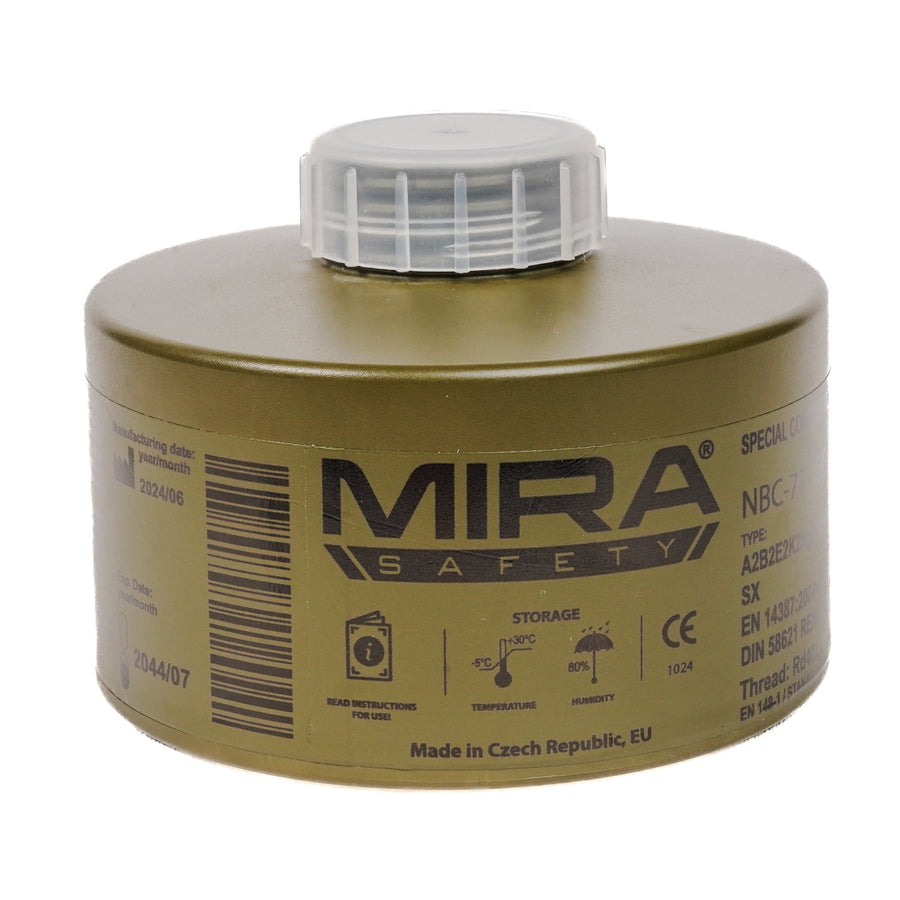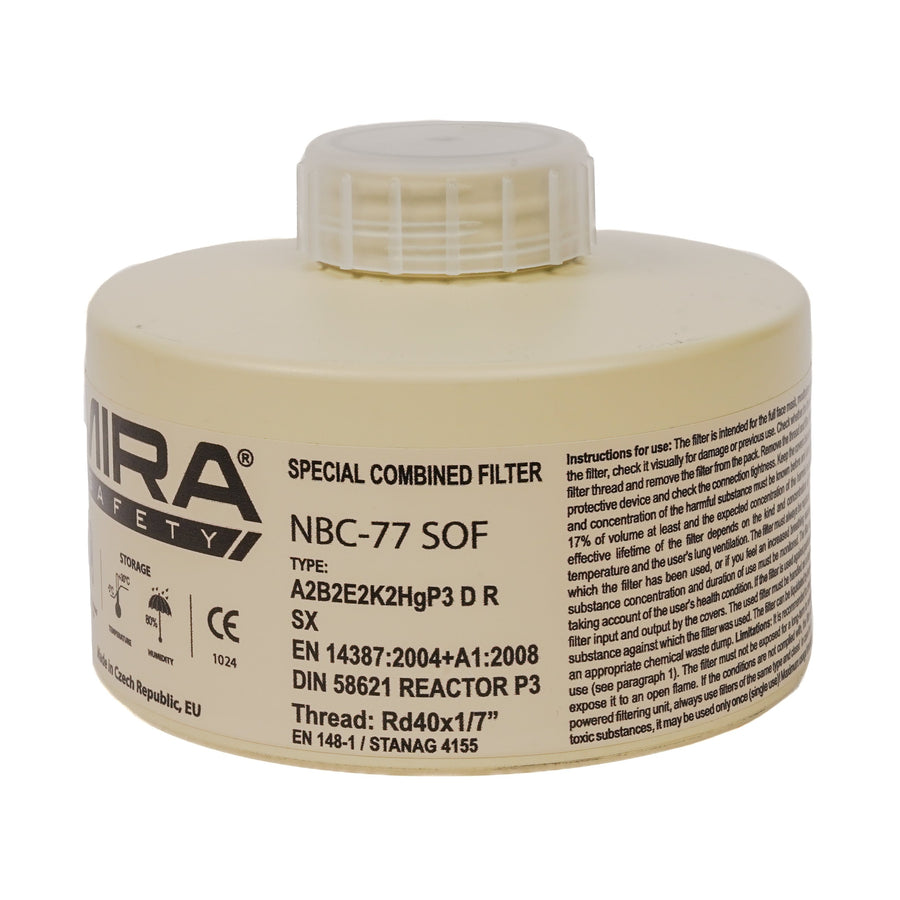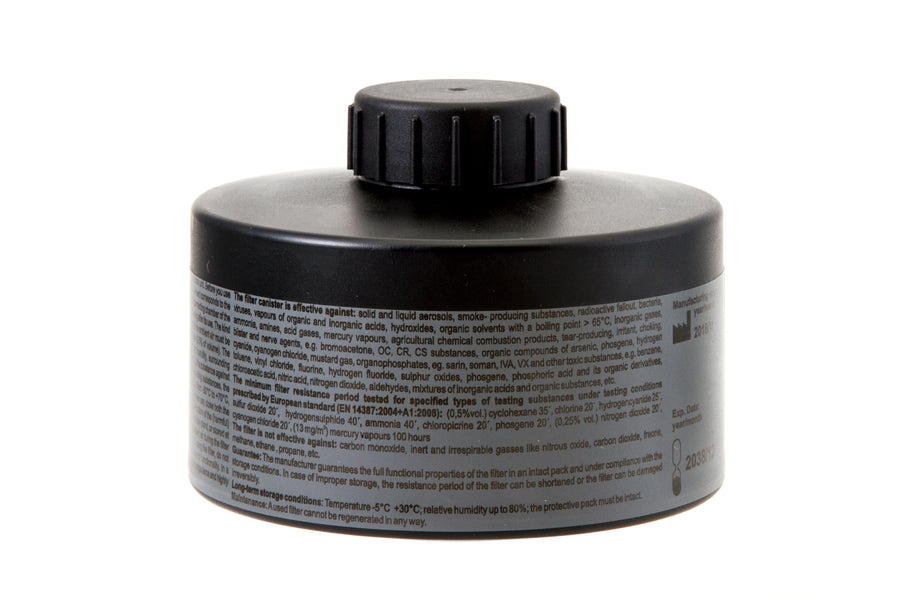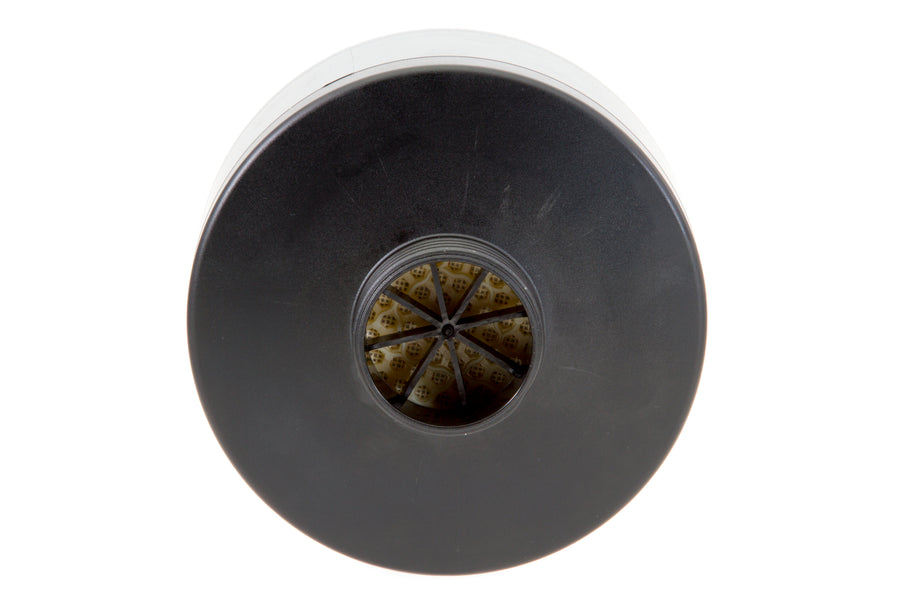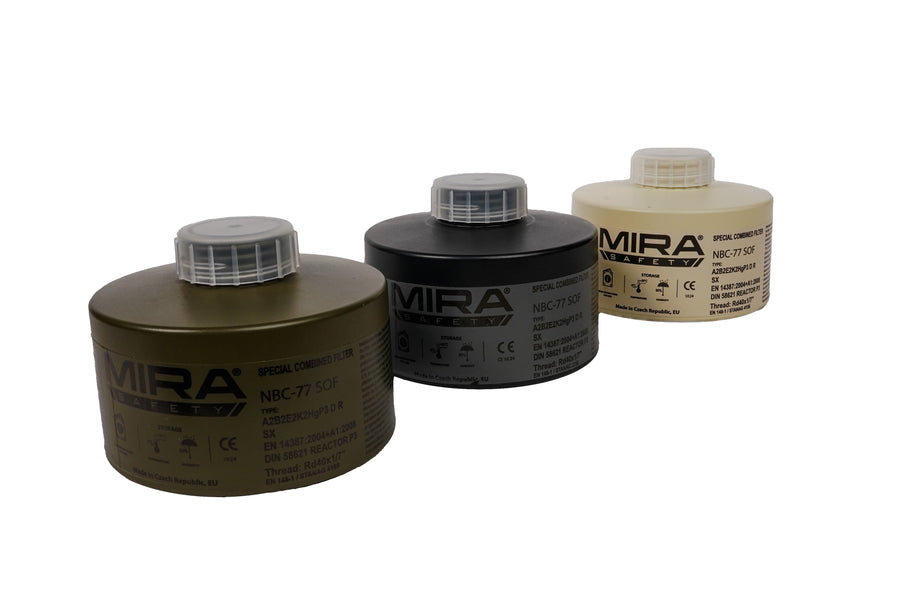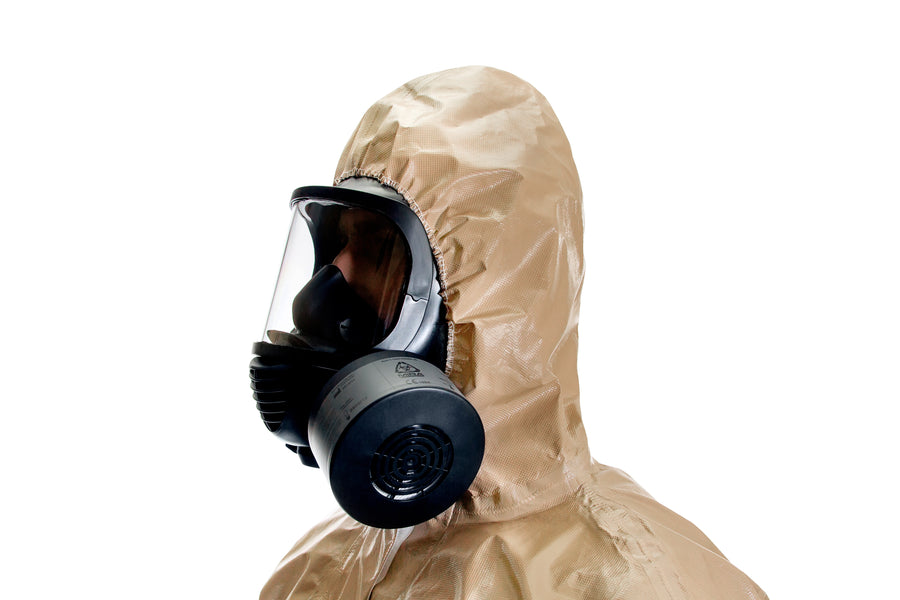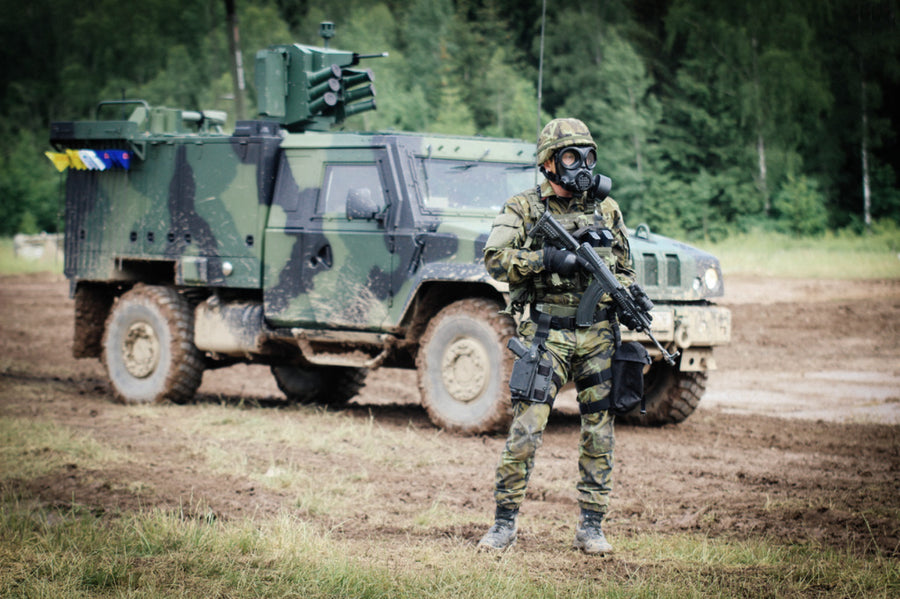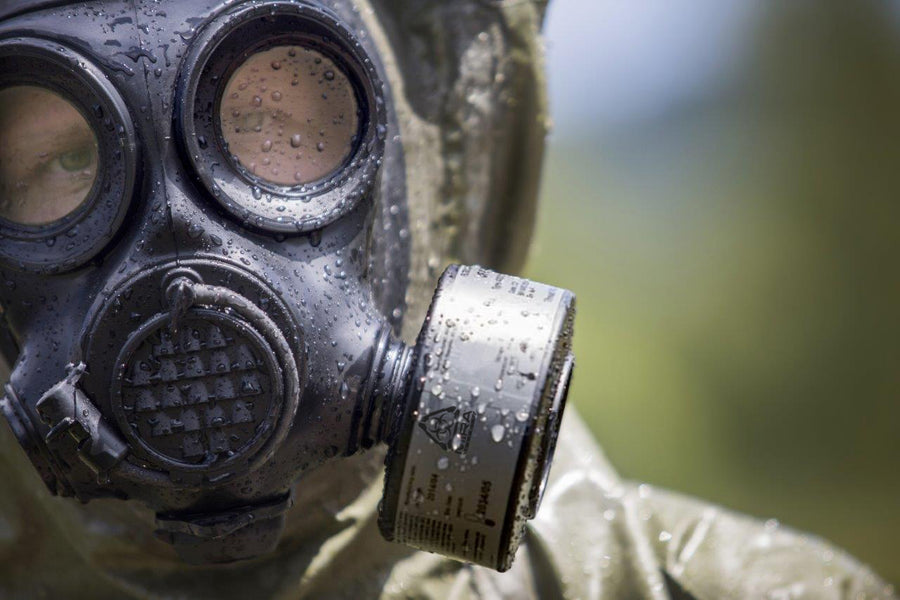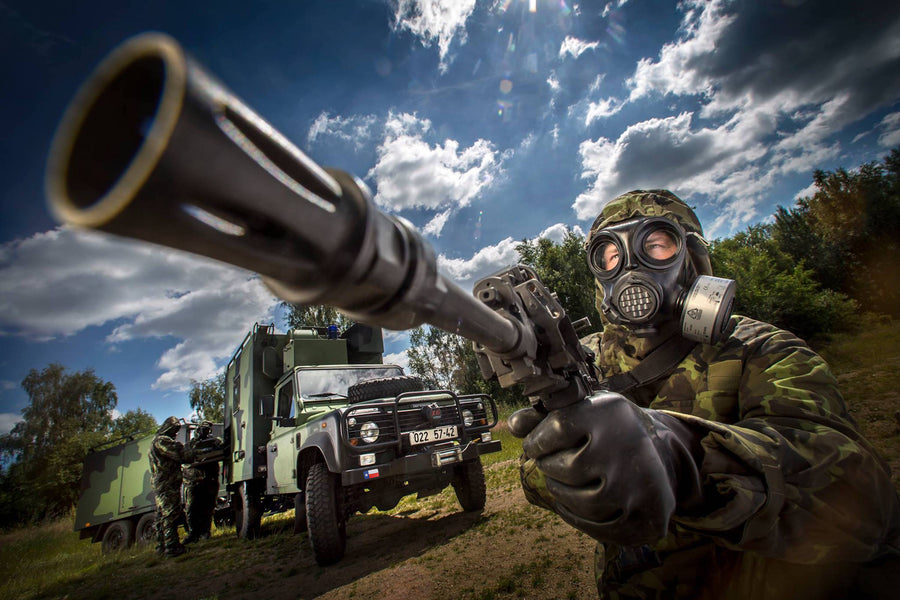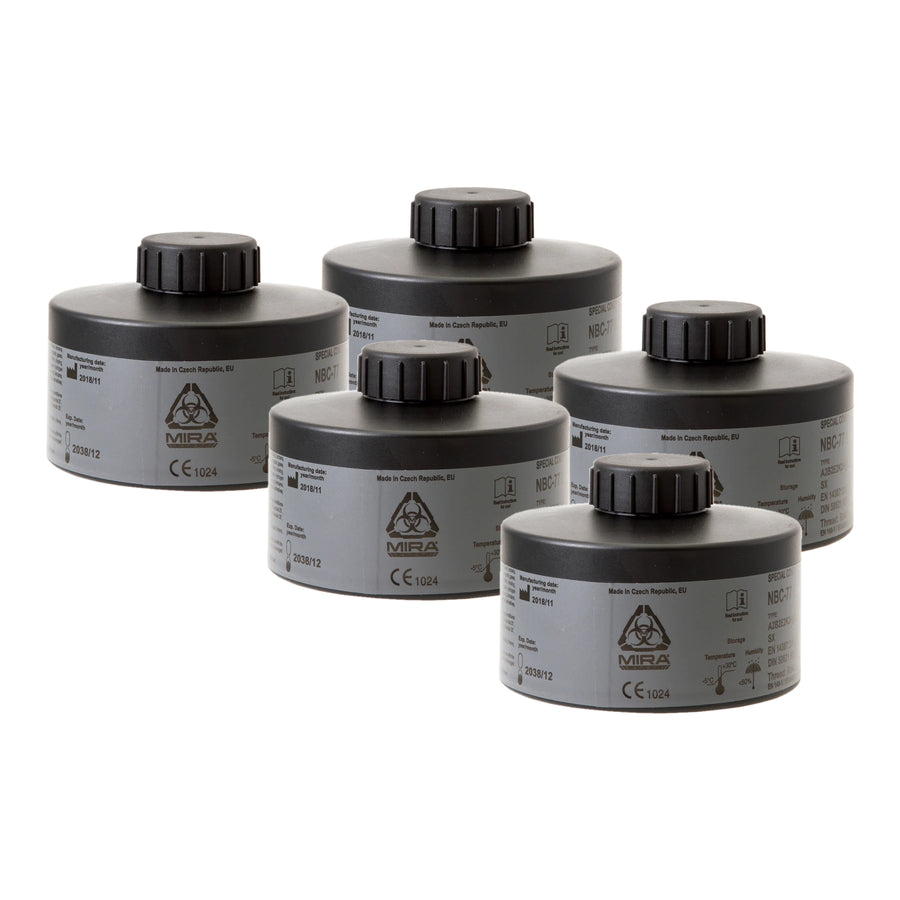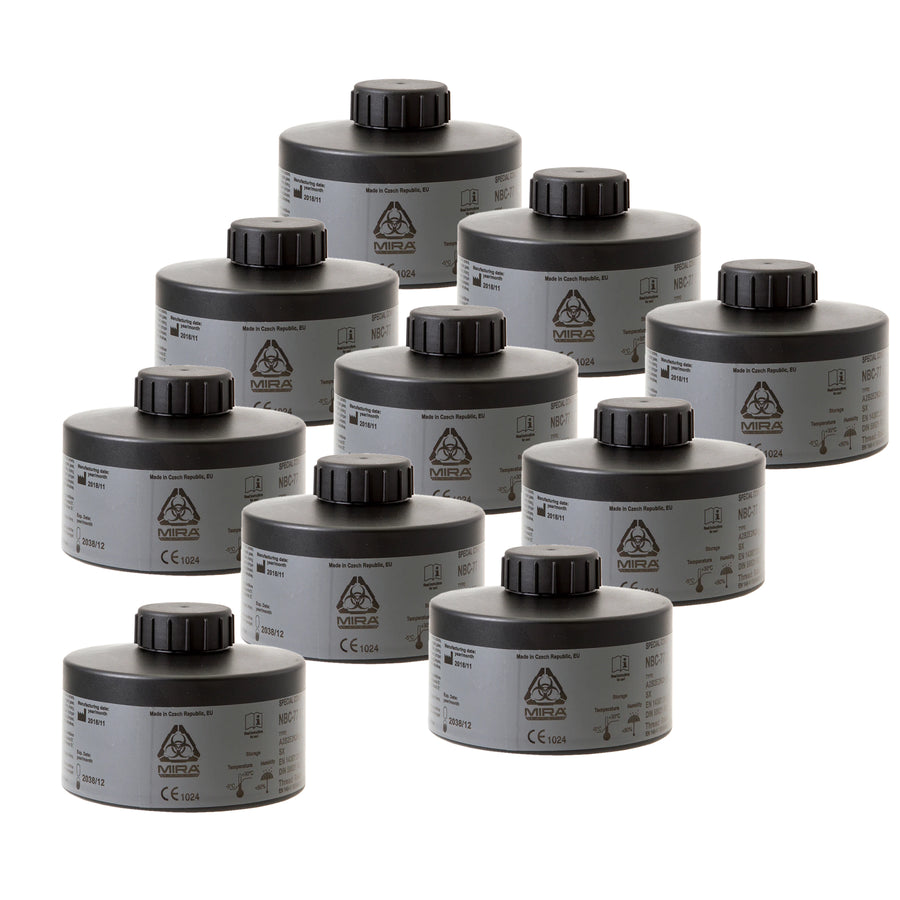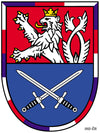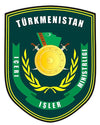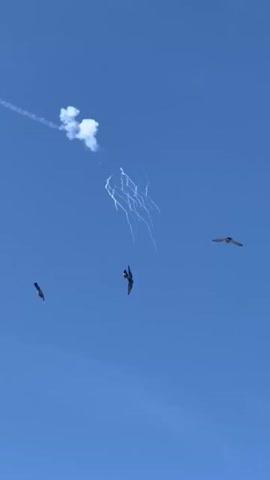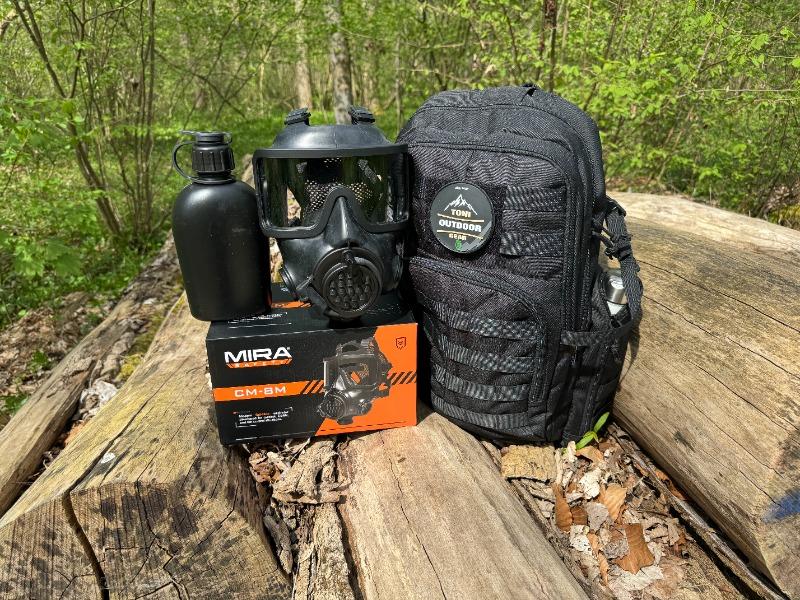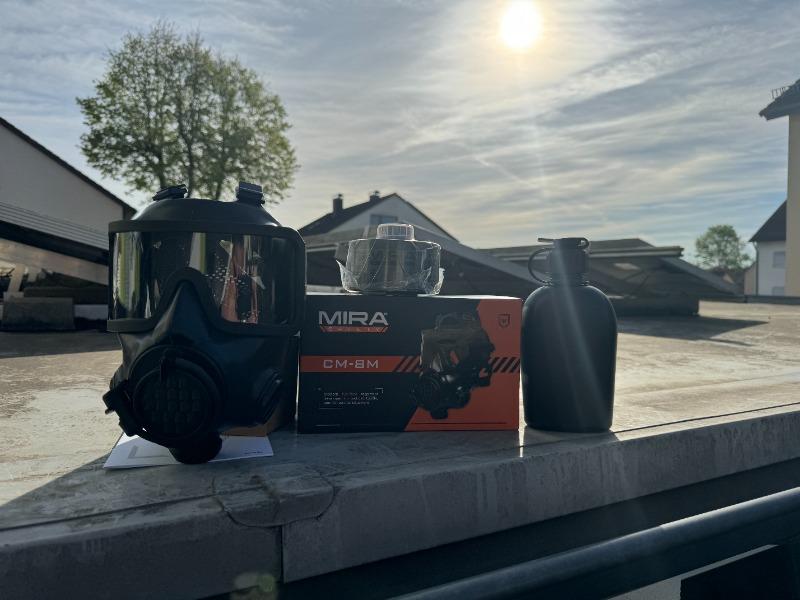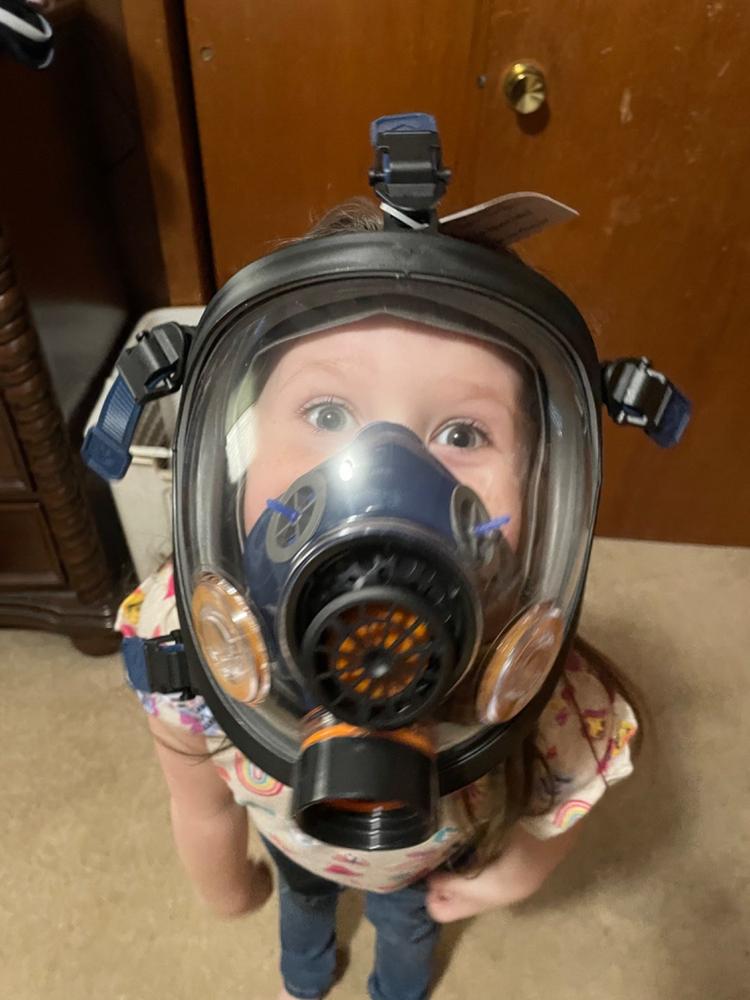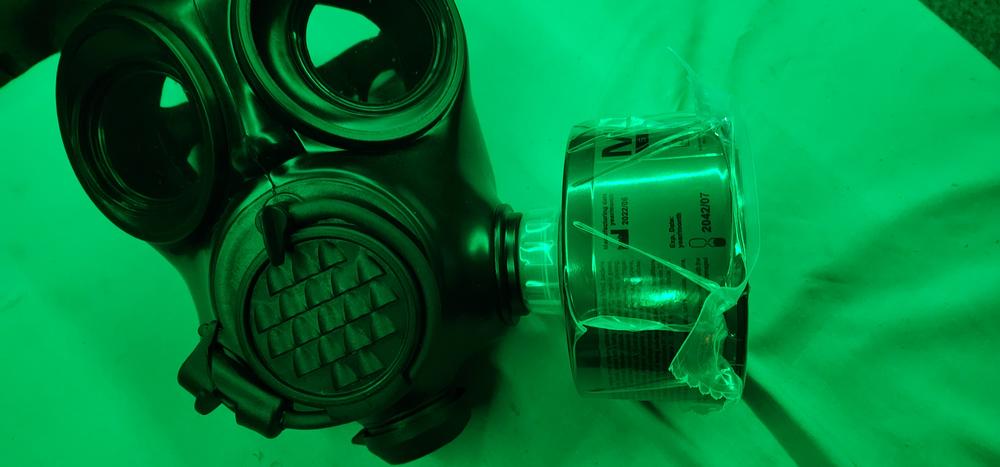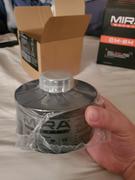- Compatible with standard 40mm NATO threaded respirators, which are widely available.
- 20-year shelf life - save money long-term by not having to replace your filters every 5 years
- Used by military personnel, CBRN specialists, and special operations forces all over the world
- Filter all known CBRN agents, including radioactive iodine, rated for A2B2E2K2HgSXP3 D R.
- Certified by European agencies and has the “CE” symbol. Compliant under EN 14387:2004 + A1:2008
NBC-77 SOF 40mm NATO Filter For Gas Masks - CBRN Filter, 20 Year Shelf Life
- Unmatched 20 year shelf life for cost-saving, long term storage
- Compatible with commonly available 40mm NATO threaded respirators for interchangeability
- Protects against a wide variety of known toxic CBRN agents, including radioactive iodine
- Tested on Type B chlorine gas, like the BioLab fire in Georgia, exceeds EN 14387:2021 standards, offering 35+ minutes of advanced Type B2 protection.
NBC-77 SOF CBRN Gas Mask Filter
OUR PRODUCTS ARE TRUSTED BY PROFESSIONALS ALL OVER THE GLOBE
We have established firm relationships with agencies worldwide and are deployed by:
If it doesn't fit, we will acquit
Free exchanges
Free shipping for
all U.S. orders
IMPORTANT NOTE for CHLORINE:
- Tested on type B gas such as Chlorine at 5000 ppm, the gas released during the BioLab fire in Georgia.
- NBC-77 SOF filter exceeds the EN 14387:2021 standard, providing over 35 minutes of protection, surpassing the required 20 minutes.
- Rated Type B2 for advanced protection against chlorine and other hazardous gases, making it an ideal choice for incidents like the Conyers chemical fire.
The NBC-77 SOF nato 40mm filter canister, in combination with a full face gas mask, mouthpiece assembly, or PAPR, reliably protects air passages against a wide range of harmful and highly toxic substances including all known CBRN agents.
The filters are produced with standard round threads according to STANAG 4155 (EN 148- 1)- Rd 40x1/7". The filter components are made of hard plastic. This results in a very robust product that is extremely durable against shock and impact damage in operational use.
New Color Options
We're excited to introduce two new color options for the NBC-77 SOF 40mm gas mask filter canister:
- Ranger Green: A versatile, muted green shade perfect for woodland and mixed terrain environments. This color option provides excellent camouflage capabilities for military and tactical applications.
- Sandstone: A neutral, earth-toned color ideal for desert and arid environments. This option offers effective concealment in sandy or rocky terrains.
These new colors join our existing lineup, providing even more versatility for various operational needs. Whether you're operating in dense forests, arid deserts, or urban environments, there's now an NBC-77 SOF filter color to match your requirements.
NBC-77 SOF CBRN FILTER KEY FEATURES:
| Technical Data | Breathing Resistance in Pa Breathing Resistance in Pa | ||
|---|---|---|---|
| Diameter | 110 mm | @ flow rate 30l/min. EN 1) NBC-77 SOF 260 <140 | @ flow rate 95l/min. EN 1) NBC-77 SOF 980 <600 |
| Height | 85 mm | ||
| Weight | 335 g ±5% | ||
| Storage time | 20 years (factory sealed) | ||
| Type and Class Particle filter efficiency @ flow rate 95l/m | Particle filter efficiency @ flow rate 95l/m | |||
|---|---|---|---|---|
| A2 - organic gases and vapors | SX - CG, CK, PS | Sodium Chloride NaCl (S) Paraffin oil (L) | EN 99.95 99.95 | NBC-77 SOF >99.999 >99.999 |
| B2 - inorganic gases and vapors | P3 - particles | |||
| E2 - acid gases and vapors | D- dust | |||
| K2 - ammonia and amines | R- reusable | |||
| Hg - mercury vapors | REACTOR - radioactive iodine | |||
Note:
1) Standard EN 14387+A1
2) The filter was tested on dolomite dust clogging
3) Radioactive iodine and its organic compound - methyliodide¹³¹ acc. to standard DIN 58621
NBC-77 SOF 40mm NATO FILTER APPLICATION:
The filter canister in connection with a suitable respirator or PAPR provides protection against solid and liquid particles, pepper spray (OC), smoke-producing substances, radioactive particles, bacteria and rickettsia, fungi, toxins, viruses, riot control agents (lachrymators, sternutators, vomiting agents), blister agents (vesicants), choking agents, blood agents, nerve agents, incapacitants, herbicides, pesticides, and TIC, such as bromoacetone, CS, CR, CN, CNC, CNS, CA substances, organic compounds of arsenic - diphenyldichlorarsine - CLARK I (DA), diphenylcyanoarsine - CLARK II (DC), adamsite (DM), diphenyldichlorarsine (DA), ethyldichlorarsine (ED), methyldichlorarsine (MD), mustard gas (H), sulphur mustard gas (HD), T-mustard gas, Q-mustard gas, nitrogen mustard gases (HN1, HN2, HN3), lewisite (L), mixed mustard gas (H-L), phosgene oxime (CX), phosgene (CG), diphosgene(DP), chloropicrin (PS), hydrogen cyanide (AC), cyanogen chloride (CK), arsine (SA), G-agents: sarin (GB), cyclosarin (GF), soman (GD), tabun (GA), IVA (GV), V-agents: VX, VR, VE, VG (amiton), VM and toxic industrial chemicals such as: fumes of organic or inorganic acids, hydroxides, organic solvents with a boiling point above 65° C, ammonia, amines, inorganic and acid gases, agricultural chemical combustion gases, other toxic substances, e.g. benzene, toluene, vinyl chloride, fluorine, hydrogen fluoride, sulphur oxides, chloroacetic acid, aldehydes, mixtures of inorganic acids, and organic substances, mercury vapors, radioactive iodine, organic compounds of iodine (Iodomethane, 129, 131), radioactive particles, etc.
| Testing Gas | Concentration of Testing Gas | Breakthrough Time in Minutes EN | NBC-77 SOF | DAC in Grams NBC-77 SOF | |||
|---|---|---|---|---|---|---|---|
| ppm | mg/I | ||||||
| A2 | Cyclohexane | C₆H₁₂ | 5000 | 17.5 | 35 | 39 | 20.475 |
| B2 | Chlorine | Cl₂ | 5000 | 15 | 20 | 45 | 20.250 |
| Hydrogen Sulphide | H₂S | 5000 | 7.1 | 40 | >80 | >17.400 | |
| Hydrogen Cyanide | HCN | 5000 | 5.6 | 25 | 50 | 8.400 | |
| E2 | Sulphur Dioxide | SO₂ | 5000 | 13.3 | 20 | 25 | 9.975 |
| K2 | Ammonia | NH₃ | 5000 | 3.5 | 40 | 50 | 5.250 |
| Hg | Mercury | Hg | ----- | 13 mg/m³ | 100 hours | >170 hours | >3.900 |
| SX | Cyanogen chloride | CICN | 2500 | 6.28 | 20 | 25 | 4.710 |
| Chloropicrin | CCI₃NO₃ | 5000 | 33.55 | 20 | 44 | 44.286 | |
| Phosgene | COCl₃ | 5000 | 20.24 | 20 | >77 | >47.058 | |
| REACTOR | Methyloidide₁₃₁ | CH₃I | - | - | 2 hours | >2 hours | - |
GAS MASK FILTER LIFETIME:
Breakthrough time of a gas mask filter is tested according to EN 14387+A1 at humidity 70% and flow rate 30 l/min, which is equivalent to the volume of air per minute used by an average person carrying out medium heavy work. The approximate lifetime (usage time) of a filter may, under normal conditions, calculated by comparing the concentration at the workplace and the minimum Dynamic Adsorption Capacity (DAC) for the filter.
GAS MASK FILTER STORAGE AND MAINTENANCE:
Each NBC-77 SOF gas mask filter is sealed in a plastic bag by the manufacturer. Store the filters unopened in a clean place at even temperature, most appropriate at -5 to +30°C and relative humidity below 80%. Sealed filters tolerate also conditions of -30 to +50°C and RH below 95%. The storage period (month and year) for filters is marked on the filter label. Do not try to regenerate the filters. Never clean the filters with compressed air or compressed water.
GAS MASK FILTER DISPOSAL:
After use, gas mask filters are considered special refuse. Make sure that they are disposed of according to the filtered substance (gases or particles) in accordance with current waste treatment regulations. If the product is to be disposed of, it should be dismantled from the respirator and disposed of as solid waste. Please see local authority regulations for disposal advice and locations.
QUESTIONS & ANSWERS
Ask a Question-
I am aware that a P3 filter is required to block the coronavirus. Which one of your filters is P3?
MIRA Safety filters (NBC-77 SOF, VK-450, DOTpro 320) are classified as "combined filters" and contain a P3 filter along with activated carbon. For those that don't know what P3 means, it is a rating for a particle filter that blocks 99.9999%+ of particulates. As viruses travel in liquid aerosols and particulates, this filter (when coupled with a full face respirator) would prevent the Coronavirus from entering your breathing passages and eyes.
-
How long does a filter last once it's opened?
Filter use time depends on a few factors, including atmospheric conditions, contaminant type, concentration, along with your breathing rate. As a general rule of thumb, we would suggest having two filters per person per day for emergency evacuation purposes. If you'd like specific data on use time, you can look at the brochure that goes into breakthrough times along with the application.
-
Can a filter be changed out on a mask during exposure?
Typically, it's never recommended to swap filters while you're in the thick of it. We are also selling escape filters, so the goal is for you to get out of the danger zone as fast as possible.
If you ever find yourself in a situation where you'll need to hot-swap filters while in the thick of it, you'll need to get proper training in order to execute the "Mask Clearing & Sealing" procedure safely. We suggest doing independent research on procedures of this level, as these are typically only taught in professional institutions. -
Viruses can only survive on surfaces for a period of a few days maximum. So if the only concern is only viruses like the coronavirus (and I don't have to worry at all about exposure to chemicals, etc.), why is it that gas mask filters cannot be reused after a few days, when any viruses that were on/in it will no longer be a danger?
For safety reasons, we cannot recommend reusing any filter. This would go against all safety standards set out by regulatory agencies all over the world regarding disposable filters.
If you insist on re-using a filter against COVID-19, it would be best to refer to CDC's guidelines. As new information is constantly being released regarding this virus, it would be best to refer to their updates on how long you'll need to quarantine an exposed filter before you can re-use it. -
Could you explain the lifetime chart that tells the length of the filter use time? For example, H2S, what is the use time under your chart?
To calculate the breakthrough time of a specific contaminant, you would use the following formula: T=DAC x 1000/AF x C. T is the approximate usage time in minutes, DAC is the Dynamic Adsorption Capacity (in grams), AF is the airflow (liters per minute) where the default is 30 l/min under normal conditions, and C is the concentration of toxic gas in mg/l. At 5000ppm concentration, and 30 l/min airflow, the breakthrough time is greater than 80 minutes (the EU standard only requires 40 mins).
-
How long would this filter last in a dirty bomb scenario?
That depends on a few factors, including the type of contaminants released, concentration, your breathing rate, along with atmospheric conditions. If this explosion released radioactive Methyliodide¹³¹ (commonly released during such events) the European standard is set to a minimum of 2 hours breakthrough time. The NBC-77 SOF exceeds this standard and can be used for more than 2 hours.
-
If the NBC-77 SOF filter was to be completely submerged in water for a period of time, would it remain functional afterwards?
The NBC-77 SOF filter is not meant to be fully submerged in water, and we do not have any data to show if it will be effective. However, the installed P3 filter does act as a hydrophobic barrier to heavy rain, decontamination showers, and etc. This filter was specifically designed to prevent water from entering the lateral side (the first point of contact for air traveling into the filter).
-
Will the NBC-77 SOF filter remain functional after exposure to heavy rain, heavy snow and water/chemical decontamination showers?
Yes, it will, as the installed P3 filter has a special hydrophobic coating, specifically for use with decontamination showers and wet conditions.
-
Does this protect against smoke, if so how many times do i need to replace with the smoke
No, it does not. You would need a smoke escape filter that contains an oxidizing agent that will help convert CO to CO2, allowing you to breathe it out (click here for the link to the VK-530 Smoke Filter).
-
Will this fit the Scott 3M M110 Dual Lens Gas mask? How does this compare to the Scott CBRN filter?
Yes, it will, as the Scott gas mask uses a 40mm NATO threaded filter. I would suggest looking at the filter technical specs to see the difference. At first glance, it seems like the NBC-77 SOF is more capable as most contaminant filtration is rated at 5000ppm, whereas the Scott filter is only rated at 1000-1500ppm.
-
Will these filters fit a MSA millennium gas mask and a M40 gas mask?
Yes, they will, as all are threaded in the 40mm NATO configuration.
-
If I work with viral vectors every day, does it mean I must have a new filter every day? $80/day?
Yes, you would need a new filter every day, but you wouldn't necessarily need a high-end CBRN filter like the NBC-77 SOF.
For viral particulates, experts recommend using a P100 (P3) filter. We have a particulate filter that retails at $150 for 6 pieces (click here for the link to the ParticleMax P3). -
Will this fit an S10 mask?
Yes, it will, as both are threaded for 40mm NATO.
-
Just to be clear, can I store a filter in a freezer bag under conditions written above, once it's opened?
You can re-seal a filter after it's opened, but we cannot guarantee that it will function the same as a freshly opened unit. As stated in previous Q&As, all figures are for freshly opened filters, as there are many variables that come into play once a filter is opened and/or used.
-
Does this filter fit the GP-5 gas mask?
No, it will not, as the GP-5 uses old 40mm GOST threading.
-
Will this fit the 3M FR 7800B CBRN Mask?
Yes, it will, as both are threaded for 40mm NATO.
-
Would this be compatible with the North by Honeywell Small Elastomer Full Face 5400 Series Dual Cartridge Facepiece?
No, it is not compatible as the North mask is not threaded for 40mm NATO filter cartridges.
-
What level filter will protect me from the Coronavirus and will this filter fit the MSA millennium gas mask?
For viral filtration, you would need a P3 particle filter (all of our filters have a P3 built-in). Since all of our filters are threaded for 40mm NATO, they should all fit the MSA Millenim mask.
-
Does this filter fit the Polish MC-1 gas mask?
This filter will fit any mask so long as the mask is in a 40mm NATO configuration. As the Polish MC-1 is an old gas mask it might be threaded in 40mm Soviet GOST. Make sure to double-check before making a purchase.
-
Will these filters work with an Avon C50 to provide proper CBRN threat protection?
Yes, they will, as both are threaded for 40mm NATO.
-
Will these filters fit Israeli gas masks?
Yes, they will, as both are 40mm NATO threaded.
-
How to properly clean the mask? How to properly dispose of a used filter? For both, in a case where you may fear you were in a contaminated area.
There are many cleaning products on the market for gas masks, and each is created for different purposes. As decontamination is a field of study on its own, we would suggest doing independent research and training before purchasing cleaning products. For viral threats, we have heard that Allegro 5003-U is a good product from industry experts. We do not sell it on our website, but you can find it in shops across the web. Filter disposal would depend on local laws for toxic waste disposal. Please check with local authorities as laws differ from county to county, state to state, and country to country.
-
Why are these masks not NIOSH approved? Is it primarily because of geographical usage?
Precisely. Traditionally, these masks were used by professionals in the EU, along with eastern-European countries. Both the CM-6M and CM-7M are EN 136 CL 3 (special purpose) certified. If you look through and compare NIOSH testing to EN, you will see that EN standards are just as stringent as their NIOSH counterparts. NIOSH does not determine quality by any means, just an extra piece of certification as mandated by OSHA for private sector professional use. Keep in mind, government-owned agencies are not subject to OSHA and can use non-NIOSH masks/filters. This includes police, fire brigades, first responders, etc. All of which are our customers in the US.
-
How long will a NBC-77 SOF filter protect in non-contaminated air against viruses?
As viruses travel in particles and liquid aerosols, this filter will protect you for as long as you can wear the mask (several days). Keep in mind; if you are in a contaminated environment, you would need to decontaminate properly before removing your protective gear, and then dispose of the filter as there is no way to regenerate it. Once the filter is used in a contaminated environment, it is considered toxic waste.
Reviews
- Reviews
- Questions
- filters
- Mira
- quality
- mask
- shelf life
- shipping
- everything
- company
- price
- business
Great CBRN filters
I purchased these for the 20 year shelf life, which is fantastic, then a while later I thought about it and decided I really wanted the upgraded CO/smoke particulate filters they sell, (which I initially debated and didn't do because of the 10 year shelf life). Anyway, the company was super responsive and helpful - and they took it back though it was outside of the return window. Love that they do a discount for veterans and LE personnel, too, which basically negated any restocking fee in my case, which was awesome. Good company. Love that the filters are shrink-wrapped, too. I printed the technical data they have above on the filters in the description so that it's a quick reference to store with the filters.
Great product
I haven't had to use it yet, but it seems very durable
Lifesaver
outstanding kit that will save your life. Make the investment now before it's too late.
NBC-77 Rev
Hi all, compared to the Soviet gas mask filter GP-5, which we are using now, NBC-77 is much more user-friendly. The plastic cap that seals the inlet port is much easier to open. Also, the filter is additionally wrapped in plastic film for long-term storage.
Haven't actually tested the filter.
Recently bought the cm-8m gas mask with a nbc-77 sof 40mm filter. Shipping was faster than expected. Packaging seems good. I haven't actually tested the filter(I kinda hope I never have to) but from what I've seen online they are very trusted. I only got this in case of a 'what if' situation but I'm glad I did. I can easily see this as being a potentially life saving tool.
